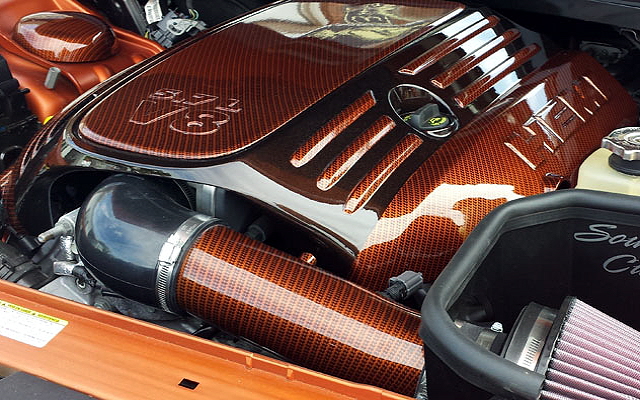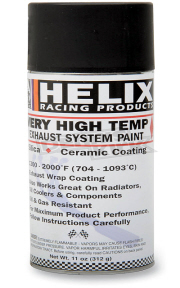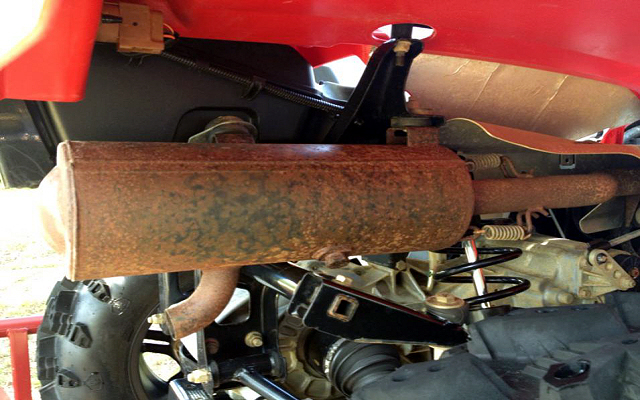Ask The Editors: Can I Hydrographic My Rusty Exhaust?
We made a few calls to hydrographic printers in our area and believe it or not they report that they have had success printing various automotive parts such as wheels, valve covers and even intakes in the past. There is a caveat though: areas that receive prolonged exposure to high temperatures (such as an ATV muffler but especially the head pipe) will often cause the film to melt and flake off.
For those who don’t know, hydrographics dipping is essentially a decorative graphics application process via water transfer. It’s very commonly used in car dashboards to simulate the look of wood or carbon fiber weave. It does work well on metal, which is why it may be appealing to make one’s steel exhaust look like a pricy carbon fiber unit, but the first time the machine reaches operating temperature could very well be the end of the graphics film.

Your best bet would be to remove the exhaust and suspend it (we usually snip and straighten out a few coat hangers for this task). From there wet sand your head pipe and muffler using a very fine grit sand paper to a dull and rough surface then to spray it using high temperature spray paint. Remember to apply each layer of paint as a fine mist, let dry, then repeat until the exhaust is covered evenly to your satisfaction (avoid clumps and dripping paint at all coasts).

Companies like Helix Racing Products actually make paint for this specific purpose with the bonus feature of leaving a ceramic shell on the pipe to prevent future rusting/ damage but as it goes for about $17 a can, this can be a bit pricy for some. We’ve had no trouble using automotive engine paint available at any auto parts store for about $10 a can and even Rust-Oleum Specialty High Heat grill paint available at any hardware store for about $7.



